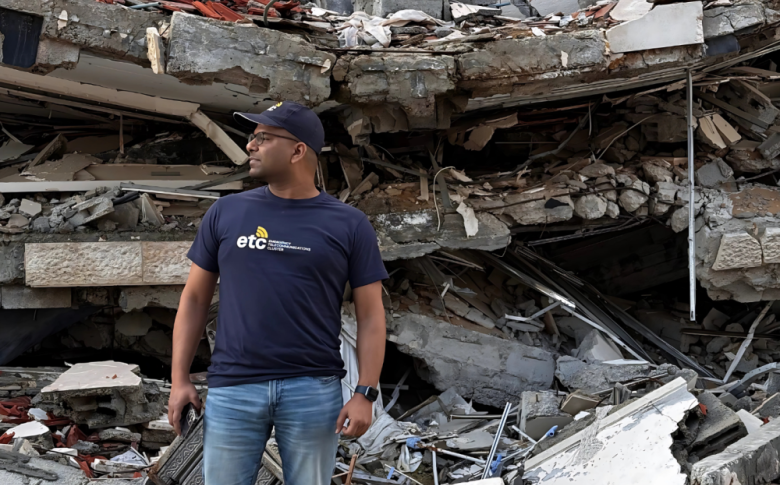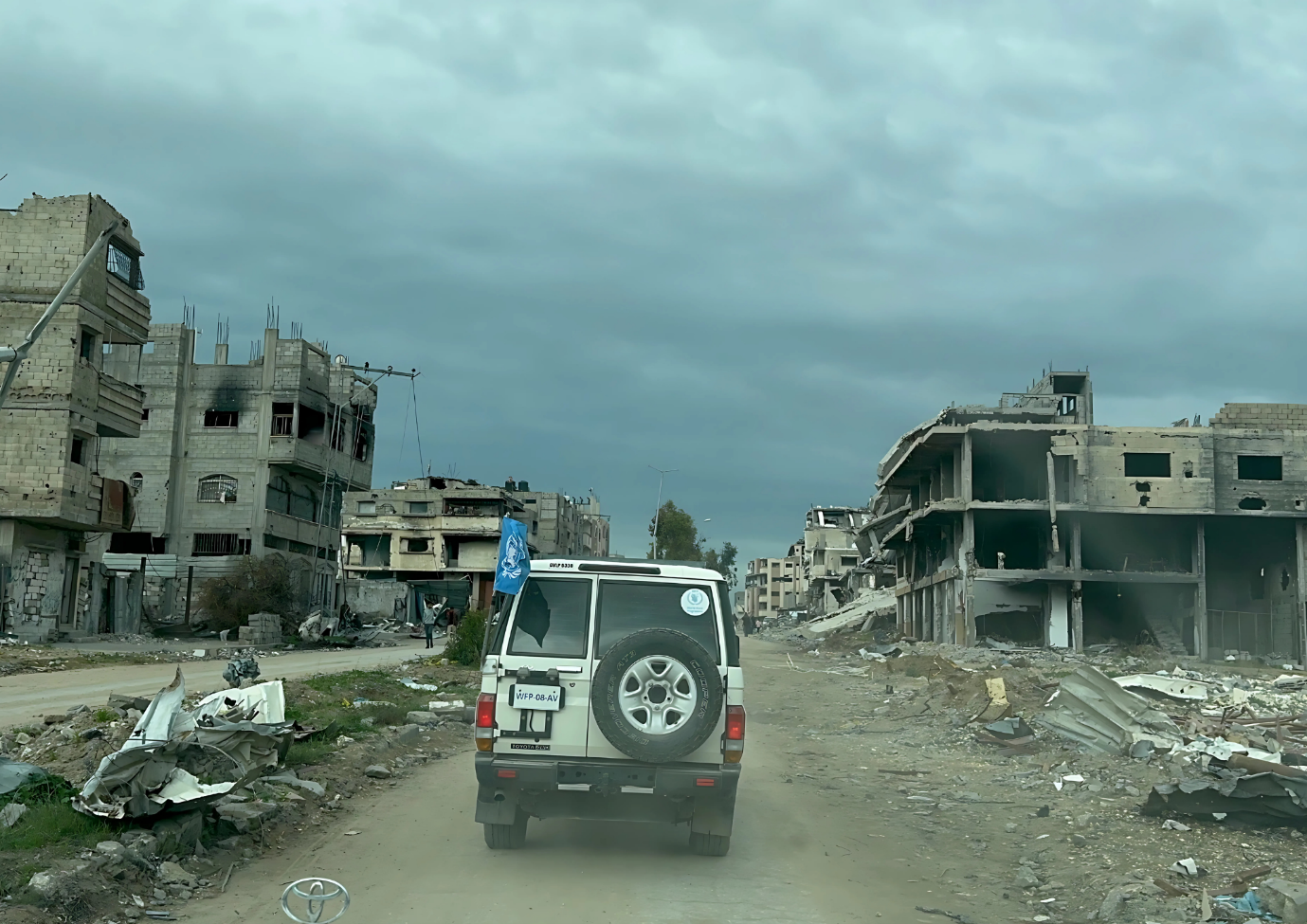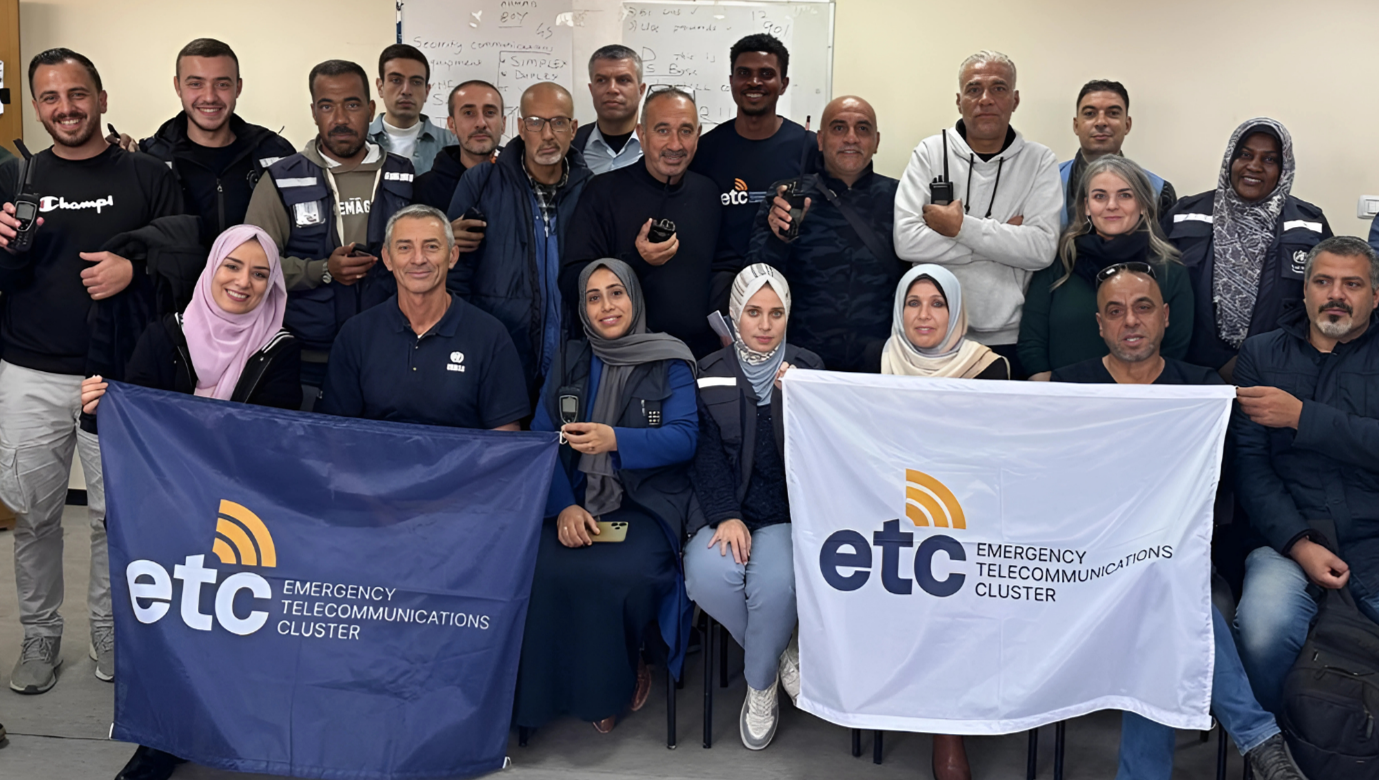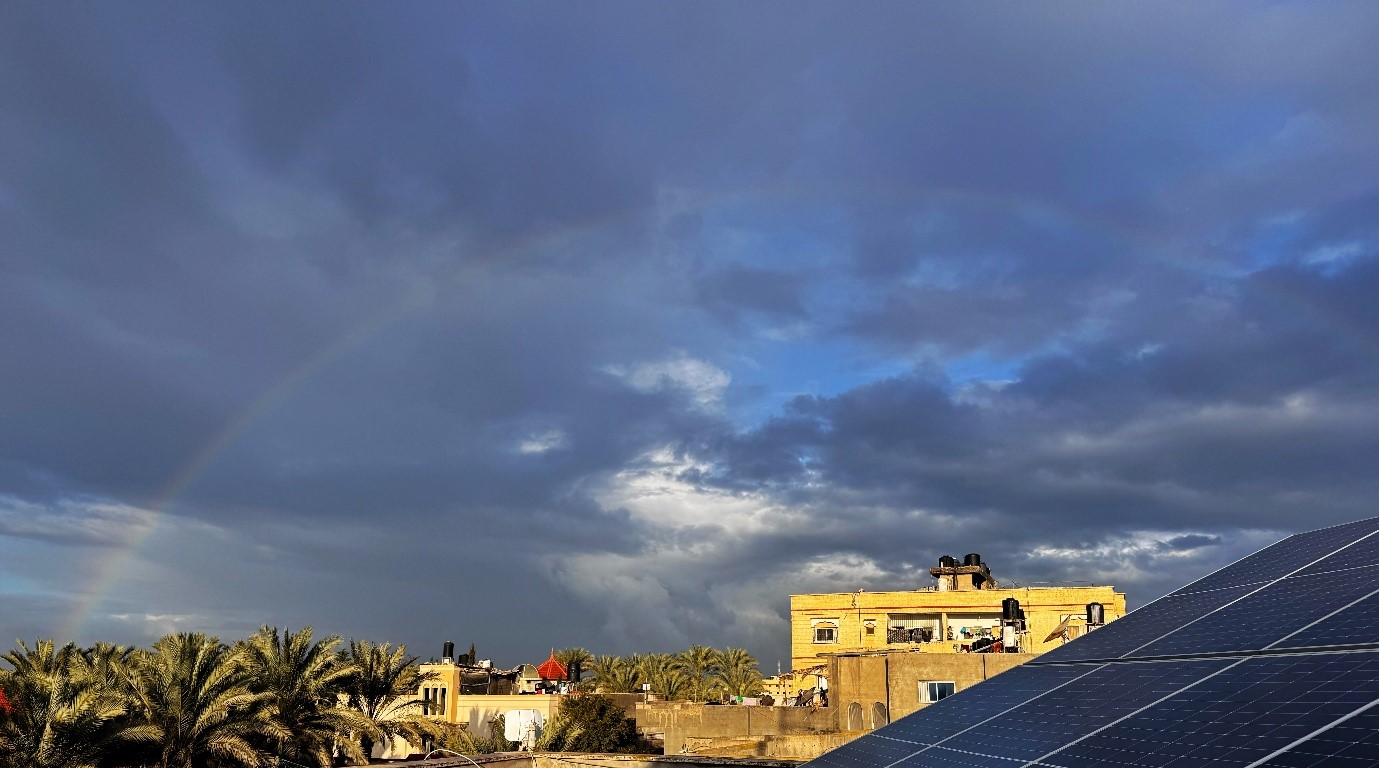Bridging the Gap: On the Ground with Bipin in Gaza

By Bipin Jha, Information Management and Reporting Officer, ETC Palestine
Surrounded by rubble, I stood among the collapsed buildings of Gaza City, radio in hand, the faint hum of generators struggling against another power blackout. Amid the destruction, that radio symbolized more than just a tool—it was a lifeline, a thread of connection in a place where everything else had fallen away.
When telecommunications go down during conflict, it’s not just an inconvenience—it can be a matter of life or death. In Gaza, amid the devastating armed conflict that erupted in October 2023, this reality came sharply into focus. As the Emergency Telecommunications Cluster (ETC), led by the World Food Programme (WFP), was activated, our mission became clear: restore and sustain communication lifelines for humanitarian responders and affected communities.
Since February 2024, I’ve had the profound opportunity to support this emergency as the Information Management and Reporting Officer for ETC Palestine—initially through RedR Australia and later directly with WFP. My journey has taken me from remote support to the front lines in Gaza, during both intense conflict and the brief calm of a ceasefire. It’s been a mission defined by urgency, resilience, and above all, purpose.
“Connectivity in an emergency is not a luxury—it’s a lifeline.”
During my deployment in Gaza from December 2024 to March 2025, I witnessed firsthand the catastrophic collapse of communication infrastructure. Power blackouts, fuel shortages, and severe damage to networks crippled the ability of aid workers to coordinate or even stay safe. With no spare parts and dangerous conditions obstructing repair efforts, the need for ETC services became more obvious than ever.

Being on the ground helped me build stronger ties with our partners—from UNDSS and OCHA to UNOPS and UNICEF—which significantly improved our coordination and response. These relationships helped us deliver faster, smarter solutions, such as emergency radio and satellite-based communications as well as tracking systems, despite facing major logistical hurdles.
“When you’re in Gaza, it’s not just about managing data—it’s about managing hope.”
My core role is to ensure information flows efficiently, from crafting situation reports and infographics to facilitating internal and external meetings. These updates are more than just technical—they shape decision-making and enable action. Through our weekly reports, dashboards, and advocacy efforts, we’ve kept partners and stakeholders informed and agile amid a fast-evolving crisis.
One of my most fulfilling tasks has been coordinating 17 security communications training sessions in collaboration with UNDSS. We trained over 240 personnel across 14 UN agencies in Gaza and Jerusalem on VHF radio and satellite-based devices usage—crucial tools for the safety of personnel and mission movements.

“Even in the darkest hours, sharing stories from the field helps remind the world that people are still here, still working, still surviving.”
Beyond operational updates, I’ve worked closely with the Global ETC team to highlight stories from Gaza—of the challenges, yes, but also of achievements and human resilience. From facilitating the import of critical ICT equipment to analyzing user feedback for service improvements, our team has been committed to adapting and innovating in near real-time.
The complete blockade of humanitarian aid since March 2025 has made this work even harder, cutting off vital supplies like fuel and ICT equipment. But we keep pushing, because in emergencies, every message that gets through and every piece of information shared can change outcomes and contribute to delivering life-saving assistance.
In my final days of deployment in Deir Al Balah, I took this picture of a rainbow arching above a solar panel—a brief but striking reminder of the rays of hope that shine through even in the darkest moments. It gave a moment of respite amid the crises. In Gaza, hope often arrives in small, powerful ways: a signal restored, a message sent, a story heard. And sometimes, it's captured in a single image that says we are still here, and we are still reaching out.

------------------
Bipin’s story is a powerful reminder that behind every technical operation, there are human stories. The ETC’s work in Gaza is not just about networks and devices—it’s about people, connection, and the fight to maintain communication in the most disconnected of times.